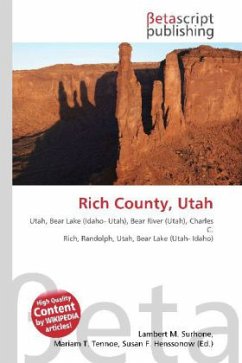High Quality Content by WIKIPEDIA articles! Utah Lake, (originally named Lake Timpanogos) at 96,900 acres (392 km2), is the largest natural freshwater lake in the state of Utah and a remnant of the prehistoric Lake Bonneville, which covered much of the state. It drains via the Jordan River at its north end into Lake Bonneville's largest remnant, Great Salt Lake. Endemic to the lake are the endangered June sucker and the Utah Lake sculpin, now extinct. Although 13 species of fish are native to the lake, only the June sucker and Utah sucker remain, together constituting less than one percent of the biomass. By far the dominant species in the lake is the common carp, introduced in 1881 as an alternative to the overharvested native fish. Common carp are now estimated at 90.9% of the biomass, contributing to a decline in native fish populations by severely altering the ecosystem.
Bitte wählen Sie Ihr Anliegen aus.
Rechnungen
Retourenschein anfordern
Bestellstatus
Storno








